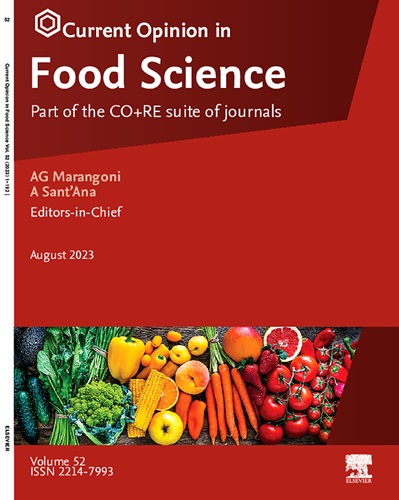确保食品安全:微生物风险评估策略
IF 8.9
1区 农林科学
Q1 FOOD SCIENCE & TECHNOLOGY
引用次数: 0
摘要
食品安全是一个关键的全球优先事项,因为食源性疾病继续构成重大的公共卫生挑战。确保食品安全需要强有力的食品卫生实践,包括有效的危害管理战略。微生物风险评估(MRA)是管理微生物风险的一个关键工具,它包括危害识别、危害表征、暴露评估和风险表征。不同的MRA方法——定性的、半定量的和定量的——取决于可用的数据和复杂性。预测微生物学利用数学模型,在模拟不同食物条件下微生物的行为,增强风险预测方面起着至关重要的作用。分子技术的进步,如多组学和宏基因组学,以及快速检测方法,为研究微生物行为提供了新的见解,提高了检测精度。风险排序工具通过比较不同食物病原体情况下的微生物危害,实现有针对性的干预。综合这些战略将改善食品安全,减轻食源性疾病负担,并加强全球公共卫生。本文章由计算机程序翻译,如有差异,请以英文原文为准。
Ensuring food safety: microbiological risk assessment strategies
Food safety is a critical global priority, as foodborne diseases continue to pose significant public health challenges. Ensuring food safety requires robust food hygiene practices, including effective hazard management strategies. A key tool for managing microbial risks is microbial risk assessment (MRA), which involves hazard identification, hazard characterization, exposure assessment, and risk characterization. Various MRA approaches — qualitative, semiquantitative, and quantitative — are employed depending on available data and complexity. Predictive microbiology, utilizing mathematical models, plays a vital role in simulating microbial behavior under different food conditions, enhancing risk predictions. Advances in molecular technologies, such as multi-omics and metagenomics, alongside rapid detection methods, offer new insights into microbial behavior and improve detection accuracy. Risk ranking tools enable targeted interventions by comparing microbial hazards across different food-pathogen scenarios. Integrating these strategies will improve food safety, reduce the burden of foodborne illnesses, and enhance public health globally.
求助全文
通过发布文献求助,成功后即可免费获取论文全文。
去求助
来源期刊

Current Opinion in Food Science
Agricultural and Biological Sciences-Food Science
CiteScore
18.40
自引率
4.00%
发文量
157
审稿时长
92 days
期刊介绍:
Current Opinion in Food Science specifically provides expert views on current advances in food science in a clear and readable format. It also evaluates the most noteworthy papers from original publications, annotated by experts.
Key Features:
Expert Views on Current Advances: Clear and readable insights from experts in the field regarding current advances in food science.
Evaluation of Noteworthy Papers: Annotated evaluations of the most interesting papers from the extensive array of original publications.
Themed Sections: The subject of food science is divided into themed sections, each reviewed once a year.
 求助内容:
求助内容: 应助结果提醒方式:
应助结果提醒方式:


